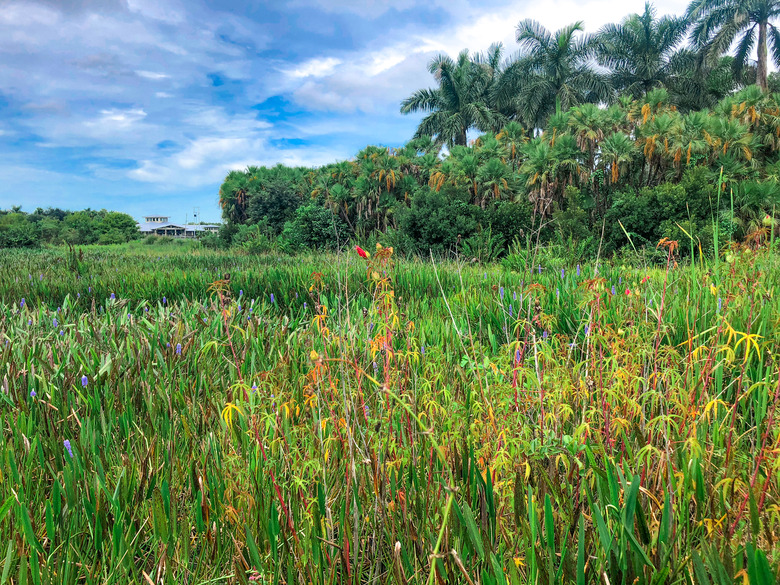Instructions On Making A 3D Model Of An Ecosystem
An ecosystem is composed of all the living organisms and their nonliving environmental surroundings in a particular geographical area. Examples of ecosystems include tundras, deserts, forests and ponds. To make a 3D model of an ecosystem, you simply need to represent the environment, plants and animals in a particular area.
Background
Background
Use a box for your ecosystem so you can hold all of its contents as you transport it from your home to school (or wherever you will display it). A shoe box is an ideal choice for this because it comes with a lid, so it can help you hold in all the contents of your modeled ecosystem. Turn the shoe box on its side to make a shadowbox-style layout. One long side of your shoe box will become the ground of your ecosystem and the other long side will become the sky. The bottom of your shoe box (which is now the back of your display) will be split between earth and sky. Spread glue along the bottom and partially up the sides and back (2 inches or so) of your shoe box. Add dirt for a temperate ecosystem, sand for a desert, or soap or potato flakes for a snowy ecosystem. Sprinkle these items generously along the glue, then shake out to remove the excess. Paint your sky an appropriate color, such as light blue, and add a sun in the corner of your box if your ecosystem is located in a sunny place. You may even want to glue cotton balls to the sky to represent clouds.
Plant Life
Plant Life
Find small samples of plant life in your back yard for a forest or temperate ecosystem. You can glue grass to the sides of your box, or take twigs with leaves on them and turn them into mini trees. Small pine branches can represent larger pine trees, or you can pull off the needles and stick them into green modeling clay stalks to represent cacti. Use small balls of modeling clay to stick your tree branches to the bottom of your ecosystem box to hold them in place.
Animal Life
Animal Life
Small plastic toy animals work best, if you can find them. Use modeling clay to stick them into your ecosystem; you can put larger animals on the ground, while smaller ones may even hide out in your trees and birds could be stuck against the sky. If you don't have any animal toys to use for this project, cut photographs of animals out of magazines or print them from online photos and tape or glue them into your ecosystem. To make them stand on their own, glue them to a cardboard backing and stick this to your ecosystem using the same modeling clay idea that you used for your trees.
Cite This Article
MLA
Cook, Jessica. "Instructions On Making A 3D Model Of An Ecosystem" sciencing.com, https://www.sciencing.com/instructions-making-3d-model-ecosystem-5815399/. 22 November 2019.
APA
Cook, Jessica. (2019, November 22). Instructions On Making A 3D Model Of An Ecosystem. sciencing.com. Retrieved from https://www.sciencing.com/instructions-making-3d-model-ecosystem-5815399/
Chicago
Cook, Jessica. Instructions On Making A 3D Model Of An Ecosystem last modified August 30, 2022. https://www.sciencing.com/instructions-making-3d-model-ecosystem-5815399/
